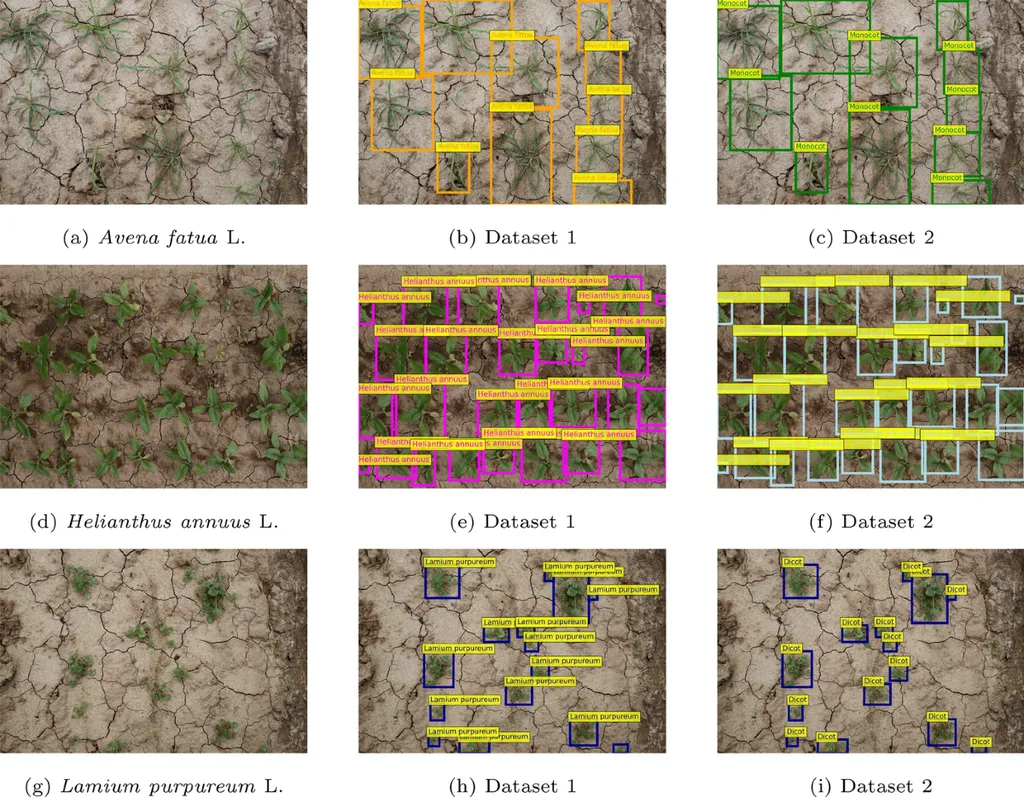In the ever-evolving landscape of precision agriculture, a groundbreaking study led by Ali El Alaoui from the Computer Systems Engineering Laboratory at Cadi Ayyad University in Marrakesh, Morocco, is set to revolutionize weed detection and control. Published in the esteemed journal Frontiers in Robotics and AI (translated to English as “Frontiers in Robotics and Artificial Intelligence”), this research introduces a novel approach that combines knowledge distillation and attention mechanisms to enhance weed detection using Vision Transformers (ViT).
Weeds are a persistent challenge in agriculture, competing with crops for vital resources and significantly reducing yields. Traditional methods of weed control often rely on broad-spectrum herbicides, which can be environmentally harmful and lead to herbicide-resistant weed species. Precision agriculture offers a more sustainable solution by targeting weeds specifically, but it requires advanced technologies to accurately detect and identify weeds in real-time.
Enter Vision Transformers, a cutting-edge machine learning model that has shown remarkable success in various computer vision tasks. “ViTs leverage a self-attention mechanism that allows them to capture long-range dependencies in images, making them particularly well-suited for weed detection tasks,” explains El Alaoui. However, deploying these models in agricultural robotics has been hindered by resource limitations, including high training costs, extensive data requirements, and runtime memory constraints.
To overcome these challenges, El Alaoui and his team proposed a knowledge distillation-based method to optimize the ViT model. Knowledge distillation involves training a smaller, more efficient student model using the knowledge from a larger, more complex teacher model. In this case, the team used ResNet-50 as the teacher model to facilitate the training of a compacted ViT student model.
The results were impressive. The optimized student model achieved a mean Average Precision (mAP) of 83.47%, demonstrating significant enhancements in weed detection accuracy. Moreover, the model exhibited minimal computational expense, with only 5.7 million parameters, making it highly suitable for deployment in resource-constrained agricultural robotics.
The implications of this research are far-reaching. “By enabling more accurate and efficient weed detection, this technology can significantly reduce the need for herbicides, leading to more sustainable and environmentally friendly agricultural practices,” says El Alaoui. Furthermore, the reduced computational requirements make it feasible to deploy these models on edge devices, such as drones and robotic weeders, enabling real-time, on-site weed detection and control.
This research is not just a step forward in precision agriculture; it’s a leap towards a more sustainable future. As the global population continues to grow, the demand for food will increase, and so will the pressure on our agricultural systems. Technologies like the one developed by El Alaoui and his team can help us meet these challenges head-on, ensuring food security while minimizing environmental impact.
The study, published in Frontiers in Robotics and AI, opens up new avenues for research and development in the field of agricultural robotics. It demonstrates the potential of combining advanced machine learning techniques with domain-specific knowledge to create innovative solutions for real-world problems. As we look to the future, it’s clear that the intersection of agriculture and technology will play a pivotal role in shaping our world.

